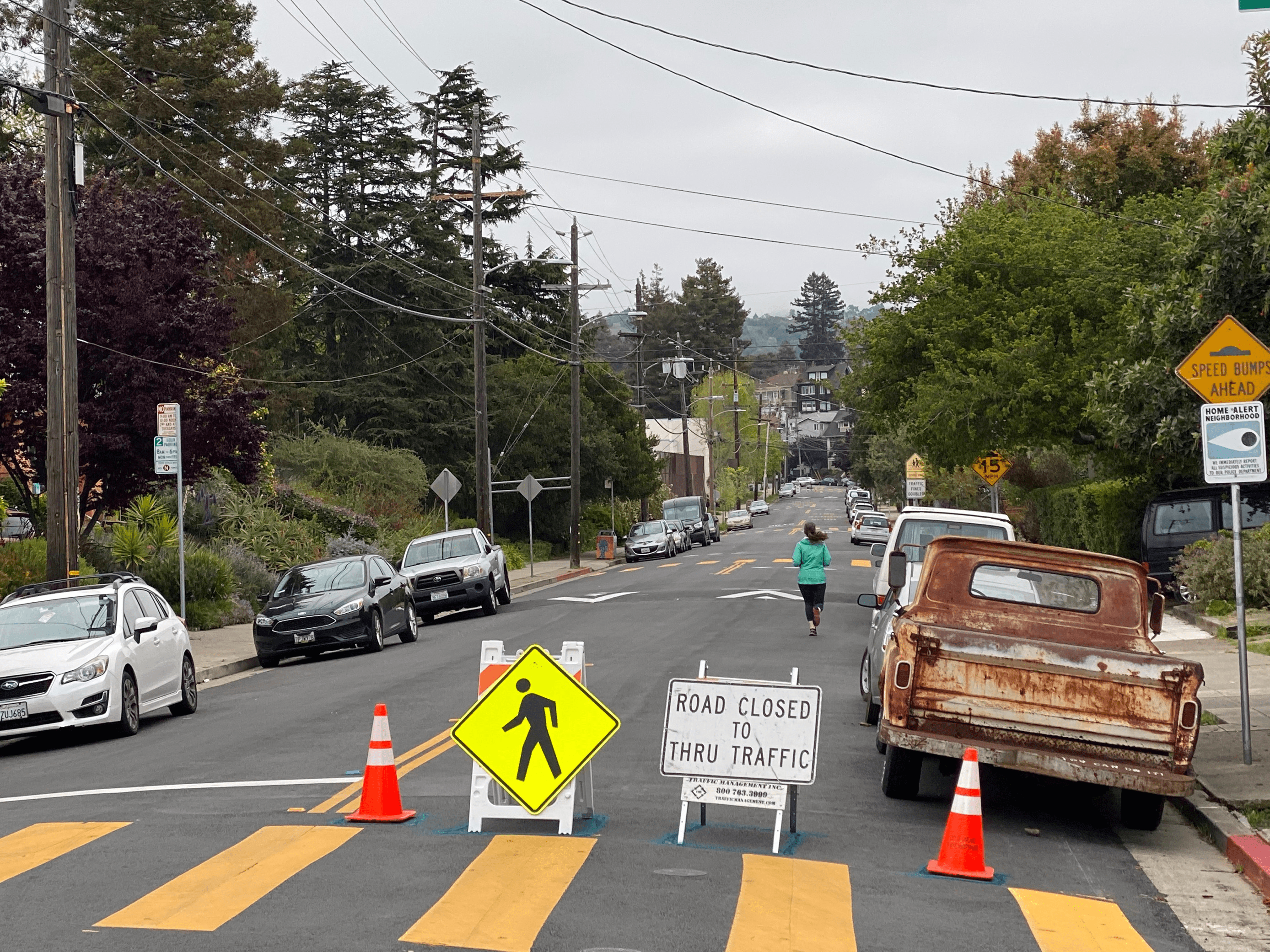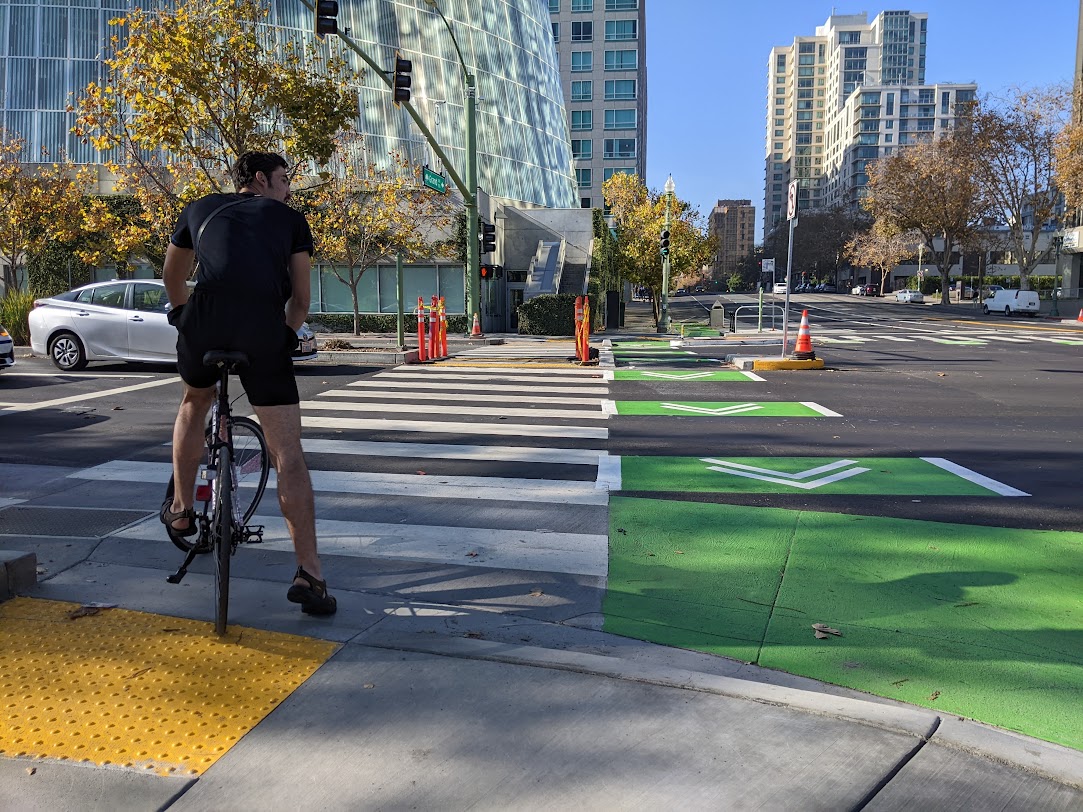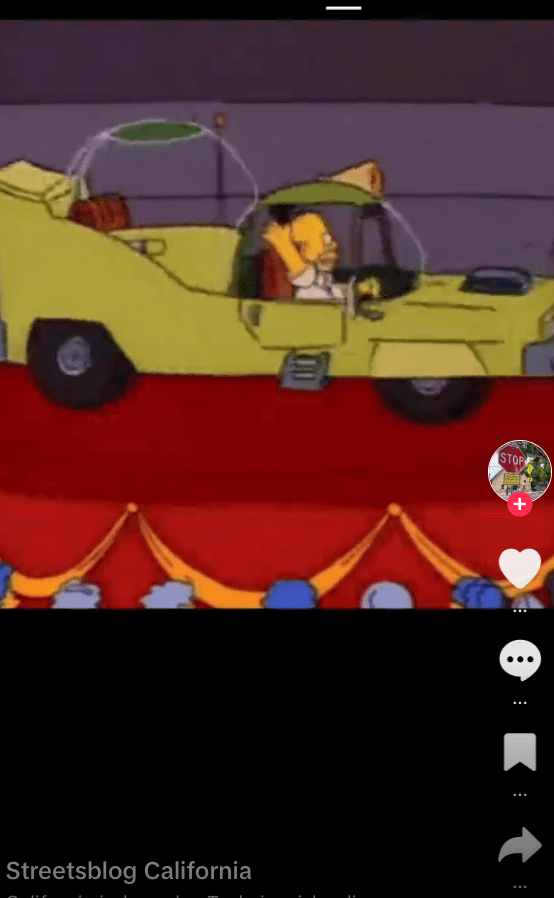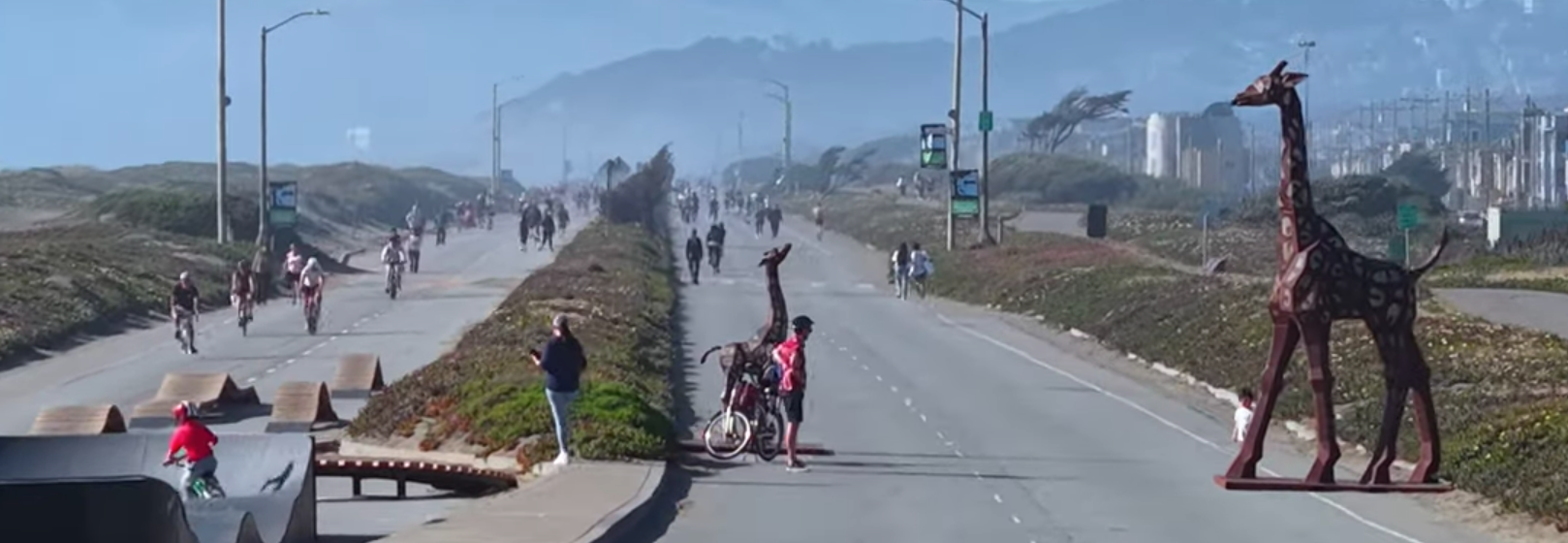A few quick updates on safe-streets topics as the Bay Area wraps up month one of 'shelter in place' in the fight to stop the spread of COVID-19.
Oakland expands 'slow streets' program
Traffic is down and streets are quiet. Many people are desperately in need of open space to get some exercise. Last week the city of Oakland's Department of Transportation announced that it would be closing 74 miles of streets to through traffic, so people can use the streets for exercise with adequate space to maintain social distancing.
The project started with four streets last weekend and it seems to be succeeding. On Tuesday, April 14, city officials identified additional miles of 'slow streets.' The plan is to roll out four to five more miles for a second phase starting today, April 17.
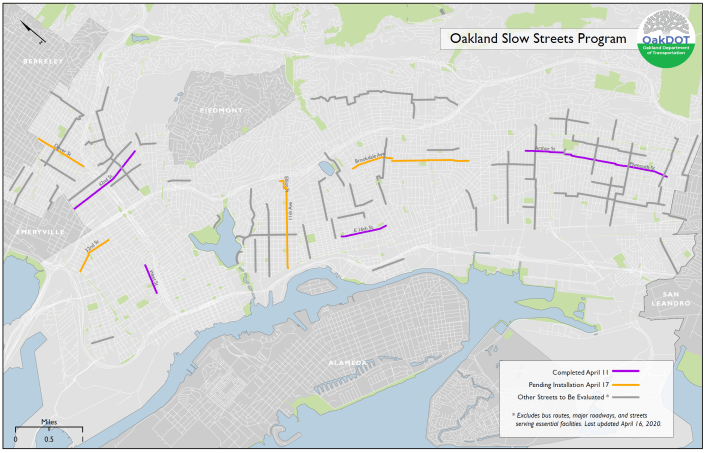
From the city's announcement:
The City has selected the following streets from the candidates identified in the April 14 announcement to receive signage and barriers as part of the Slow Streets Program expansion on April 17, representing an additional 4.6 miles:
· 11th Ave/ Bayview Ave/ Elliot St/ E 34th St – From E 8th St to Park Blvd
· 32nd St – From Mandela Pkwy to San Pablo Ave
· Brookdale Ave – From Fruitvale Ave to Kingsland Ave
· Dover St – From Alcatraz Ave to 52nd St
Make sure to take Oakland's survey about the program. Results so far have been overwhelmingly positive, with over 300 respondents.
Palo Alto is reportedly planning to follow Oakland's lead and open streets for exercise as well. Meanwhile, San Francisco is resisting calls to follow suit.
Walk San Francisco reminds people to get out there and walk
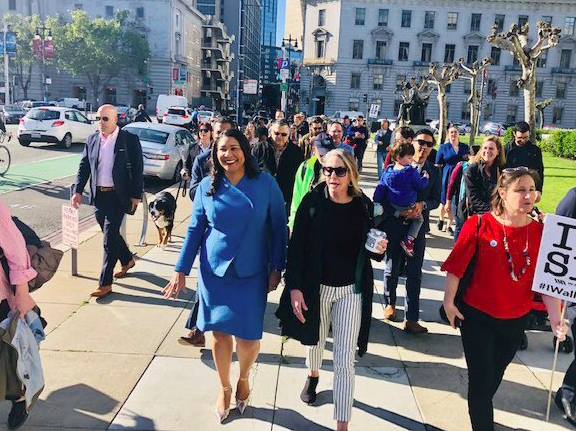
San Francisco's annual 'Walk to Work Day' was to be held yesterday, Thursday, April 16. It was cancelled, along with so many other gatherings, as part of the city's efforts to stop the spread of COVID-19. It's now scheduled for the fall of 2020.
Walk SF's Jodie Medeiros wants people to remember that as long as one maintains six-feet of distance from others, there's no reason everyone can't still go for a walk in their own neighborhoods. "I invite you to take a walk if you can. On your walk, think about what walking means to you," she asked in a statement about the cancellation of the event.
The group has put together a list of family walks that can be done independently, complete with maps and suggested activities. And they've got suggested walks for every district in San Francisco. "As always during shelter-in-place, be sure to practice social distancing at all times," they write in a post. "Stay six feet or more from others (except household members)."
"Simply seeing people, even at a distance, heartens me. Witnessing magnolias in bloom in Golden Gate Park soothes me. Being out on foot feels like a gift… and such a powerful reminder of how walking is part of our shared humanity," writes Walk SF's Marta Lindsey, in a blog post.
Be sure to check out all of Walk San Francisco's suggested walks.
High-speed rail moves forward
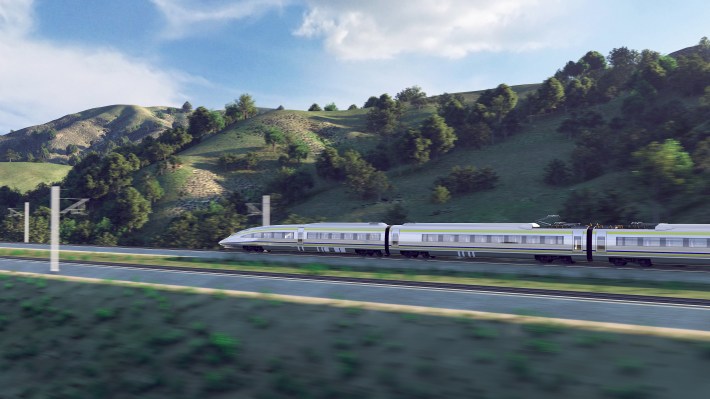
Despite the COVID-19 crisis, construction continues in earnest on the 119 mile spine between Bakersfield and Madera on California's High-speed rail system. Electrification work and other upgrades, meanwhile, are moving ahead on the Caltrain corridor between San Jose and San Francisco. The next step will be joining those two sections with dedicated, high-speed track. Towards that ends, another milestone in the project will be realized next week, when environmental documents will be made public on the connection through the Pacheco Pass, joining San Jose and Merced.
From the CaHSRA's website:
The San Jose to Merced project section is part of the first phase of the California high-speed rail system that will provide a critical rail link between the Silicon Valley and the Central Valley. The approximately 84-mile project section will travel between stations in San Jose (Diridon Station) and Gilroy and (after passing through the Central Valley Wye) north to Merced or south to Fresno.
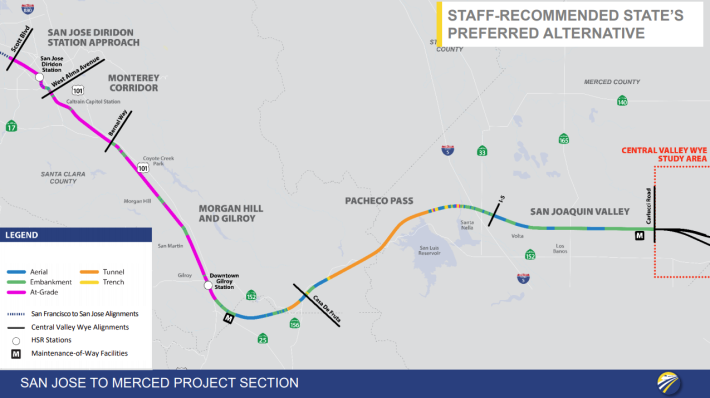
Open houses on the plans are still scheduled to take place next month in San Jose, Gilroy and Los Banos. However, given the COVID-19 emergency, it's a safe bet that these will be moved online. Check the CaHSRA web page for more information or to comment online.
